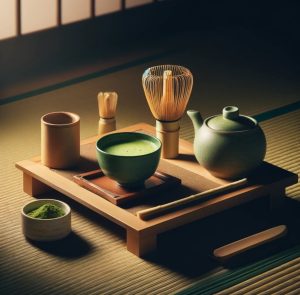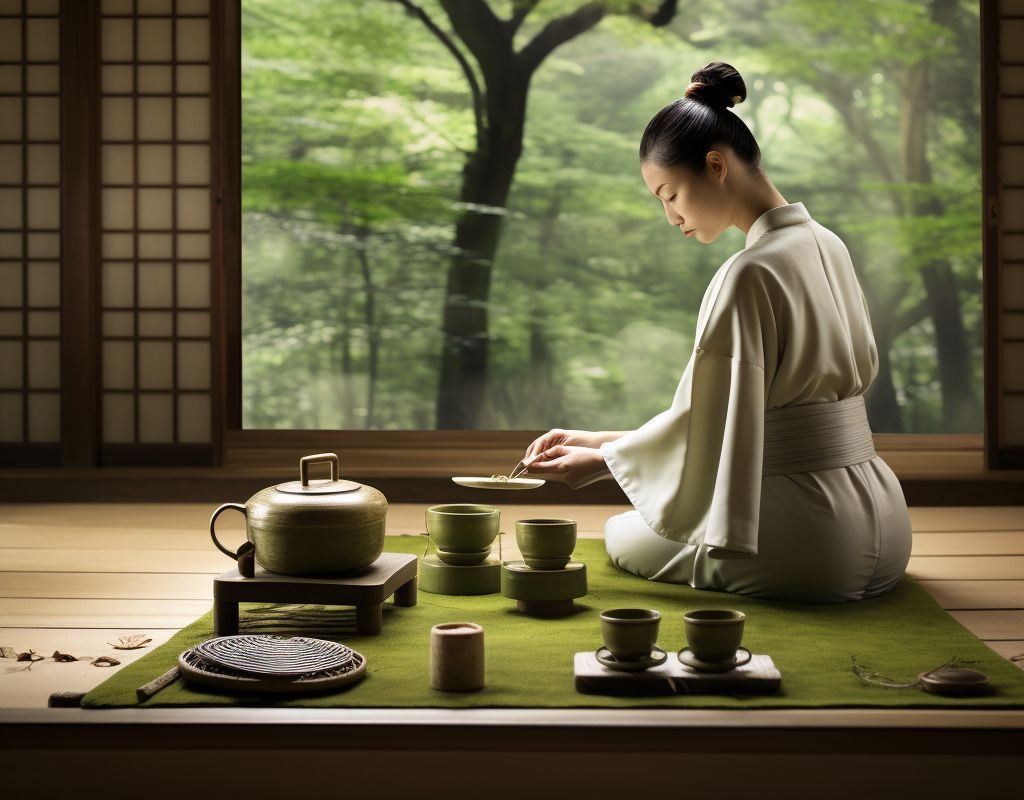
Matcha is more than just a latest beverage fad or an alternative to coffee. It’s not merely a trendy drink celebrities and influencers drink by the gallon. Matcha dates back nearly a millennium to the times when dynasties ruled China and Shogun clans dominated in Japan. This vibrant green tea powder, renowned for its rich flavor and myriad health benefits, carries with it a history as deep and complex as its taste. Let’s explore the vibrant journey of matcha, from its ancient roots to your Instagram feed.
The Ancient Beginnings:
Matcha’s story begins in the Tang Dynasty (618-907 AD) in China, where tea leaves were steamed and compressed into bricks for ease of transport and trade. This method preserved the tea and made it easier to exchange over long distances. However, it was during the Song Dynasty (960-1279 AD) that the practice of grinding these dried tea leaves into a fine powder and whipping it into hot water began to take shape. This method emphasized the appreciation of the tea’s full flavor and essence, setting the foundation for what would become matcha.
The Zen Connection:
The turning point in matcha’s history came with the transmission of Zen Buddhism from China to Japan. The monk Eisai, often credited as one of the most influential figures in the introduction of Zen (and tea) to Japan, brought back not only religious texts and practices but also tea seeds and the knowledge of this unique powdered tea.. He authored a book of”Kissa Yojoki” (Tea and Health Promotion), the first Japanese manuscript dedicated to tea, particularly praising matcha, its medicinal qualities and ability to aid meditation.
Turning Tea into Tradition:
In Japan, matcha became more than just a drink, it evolved into a tradition and a spiritual path. The Japanese tea ceremony, or Chanoyu, which centers around the preparation and presentation of matcha, developed during the Muromachi period (1336-1573). This ceremony emphasizes aesthetics, precision, and a deep presence in the moment, reflecting the Zen philosophy of mindfulness. The tea masters of this era, such as Sen no Rikyū, elevated this practice to an art, infusing it with principles of simplicity, harmony, respect, and tranquility.
Uji: Home of Matcha
The cultivation of matcha became particularly refined in Uji, a region of Japan near Kyoto. Thanks to its favorable climate and high-quality water, Uji developed a reputation for producing the finest matcha in the world. The techniques of shading the tea plants to boost their chlorophyll content and enhance the savory umami flavor of the leaves were perfected here, creating a matcha that is both complex and balanced.
Modern Popularity:
Today, matcha is experiencing a global renaissance. No longer confined to tea ceremonies, it is celebrated for its health benefits, including high antioxidants, boosting metabolism, and enhancing concentration. Matcha has found its way into lattes, desserts, and even skincare products, beloved by health enthusiasts and culinary innovators alike.



